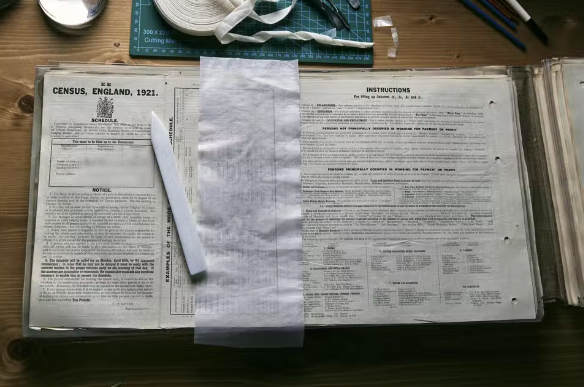Throughout the 20th and early 21st Century, a nationwide Census was taken every decade – a record of the nation at any given time. On 6th January 2022, over a century after it was first recorded, the 1921 Census was published – the last the public will see for the next 30 years.
Taken on 19th June 1921, the Census reflects a nation recovering from the Great War and a global pandemic. Birth rates notably decreased as the population of widowed women grew and for the first, and only time, in History, orphans were counted in the Census return – a fact that not only resulted in political change, but also in expanding areas of research in the genealogy field. In cases where an individual had no living guardians, we are still able to see – for this moment in time – their ages, names, and their place of residence, all of which are crucial elements in our work.
Probate Genealogists rely on Census’ daily - whether in opening new avenues of research, or simply confirming what we already believe to be true. Helpful columns – present in all Census returns – include addresses and ages, and aid in building an accurate picture of the family we are researching. The 1841 Census was the first to present useful details for family historians, and – over time – each return began to present its individual characteristics. The 1911 Census, published ten years ago, demonstrates the relationship between the head of the household to each individual living in the same residence, as well as the number of children of a married couple – and whether they were living, or dead.
The 1921 Census is unique not only in it being the last return taken until the mid-20th Century, but also in it being the first Census taken after the introduction of the 1920 Census Act. As explained in Edith Abbot’s ‘The English Census of 1921’, this presented a clear, coherent and – mostly – unchanging format for both the 1921 Census and those that followed. Census returns from 1921 onwards would include all particulars mentioned in the Schedule of the Act, specifically ‘’(1) names, sex, age; (2) occupation, profession, trade, or employment; (3) nationality, birthplace, race, language; (4) place of abode and character of dwelling; (5) condition as to marriage, relation to head of family, issue born in marriage; (6) and any other matters with respect to which it is desirable to obtain statistical information with a view to ascertaining the social or civil condition of the population.’’. 1
Each Census presents its own benefits, and they are becoming increasingly useful to companies such as Hoopers; simple facts such as occupation can help us identify marriages, and birthplaces are vital in tracing heirs that may have immigrated.
In 1921, divorce was first recorded as a marital status – helping to ensure our research remains accurate. Intestacy laws in England specify that half-blood siblings are entitled over aunts, uncles, and cousins of the full blood; the recording of a divorce status helps us determine whether the individual(s) in question remarried and, as such, whether there is a possibility of half-blood family members. The Census has – as such - become an integral part in verifying our research, and all beneficiaries traced.
On 21st March 2021 adults across England, Wales, and Northern Ireland filled in their Census return; a century later, the world remains a largely different place, with additional columns reflecting major changes.
As a whole we rely on Census returns as a means of following societal change – in genealogy, they are an integral part of our work - necessary tools in verifying our research, and ensuring all heirs are found.

Joanne Hamilton, Case Manager
1 The English Census of 1921 : Abbott, Edith : Free Download, Borrow, and Streaming : Internet Archive
« Back to News
